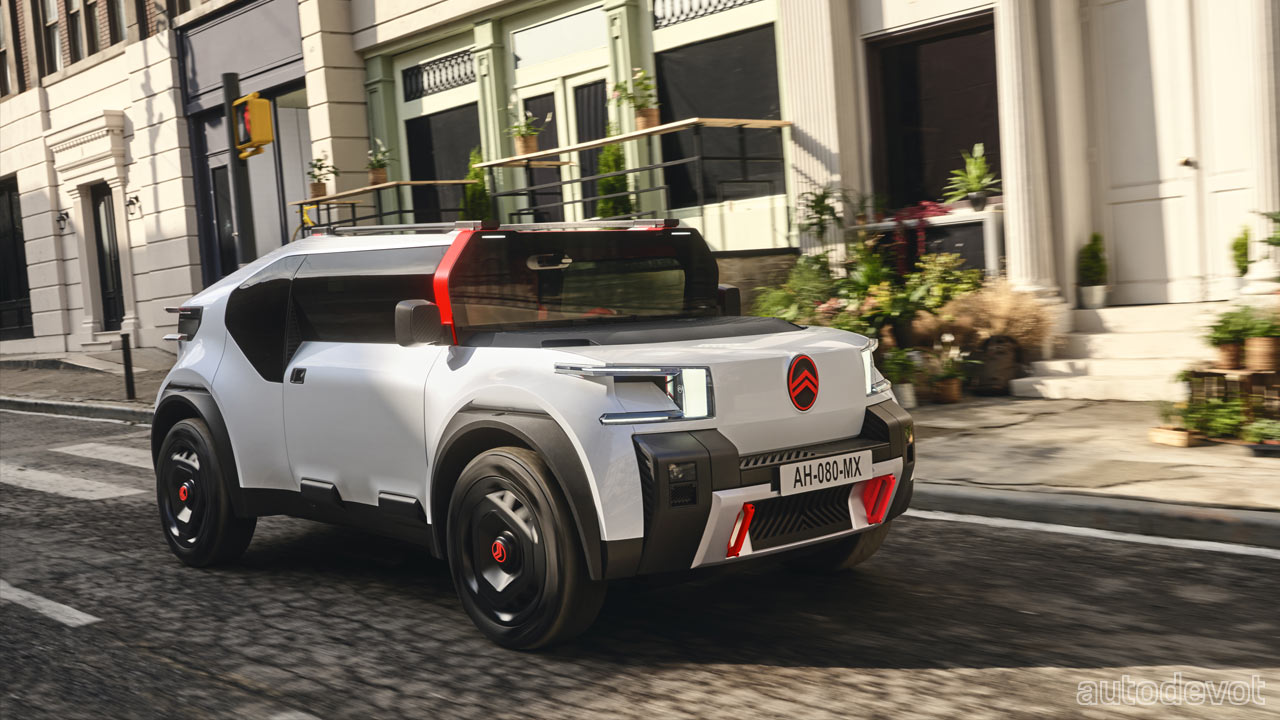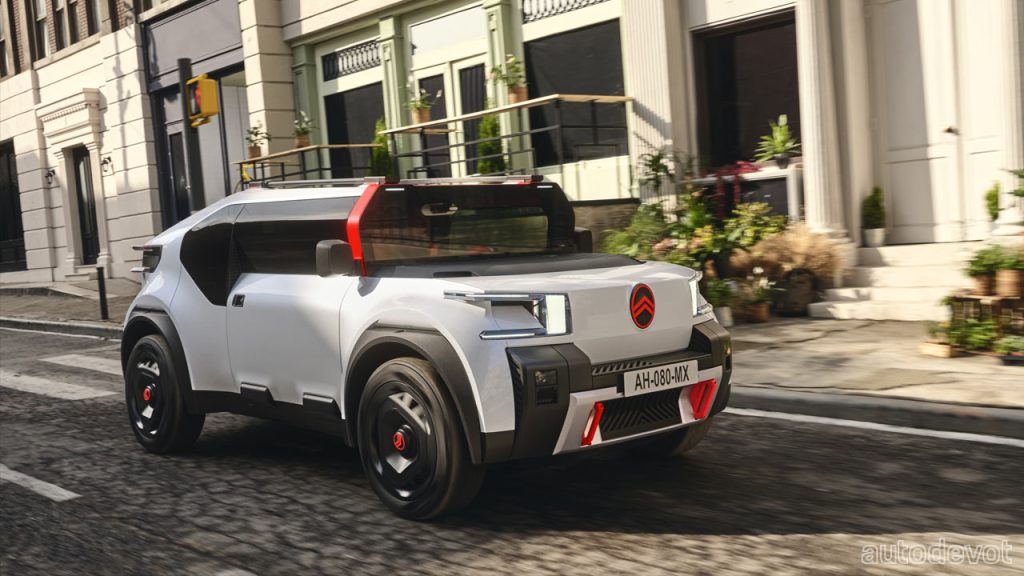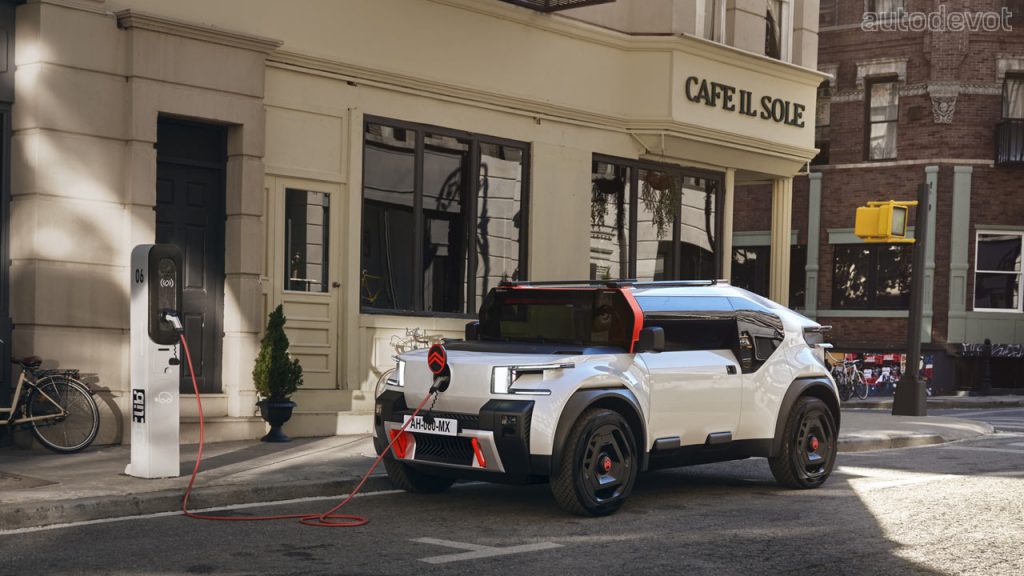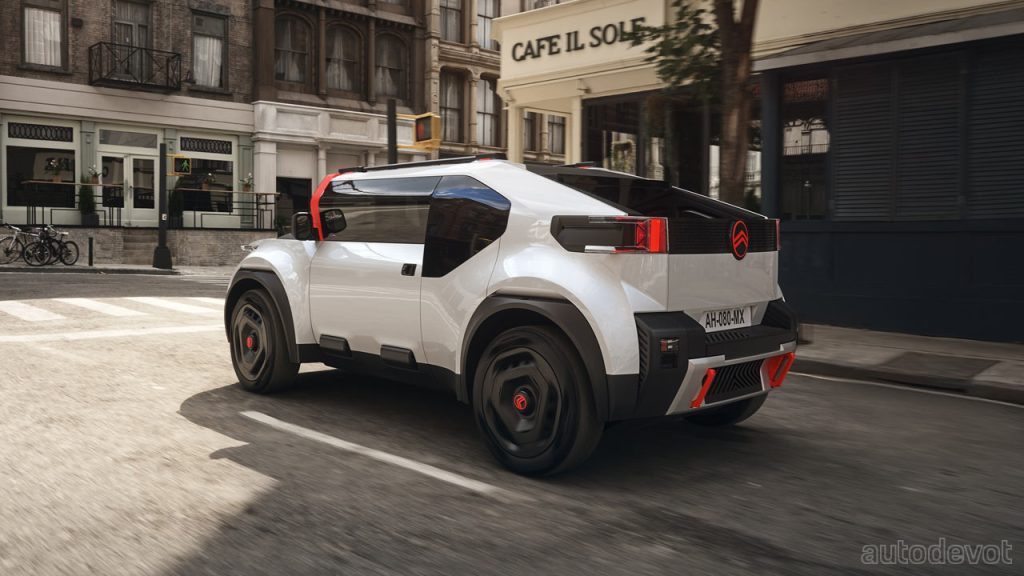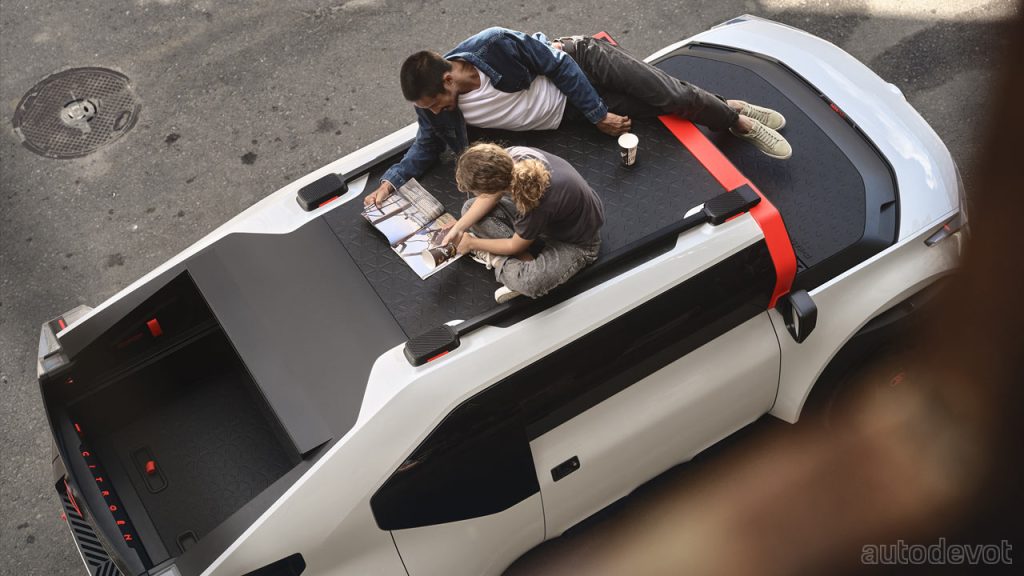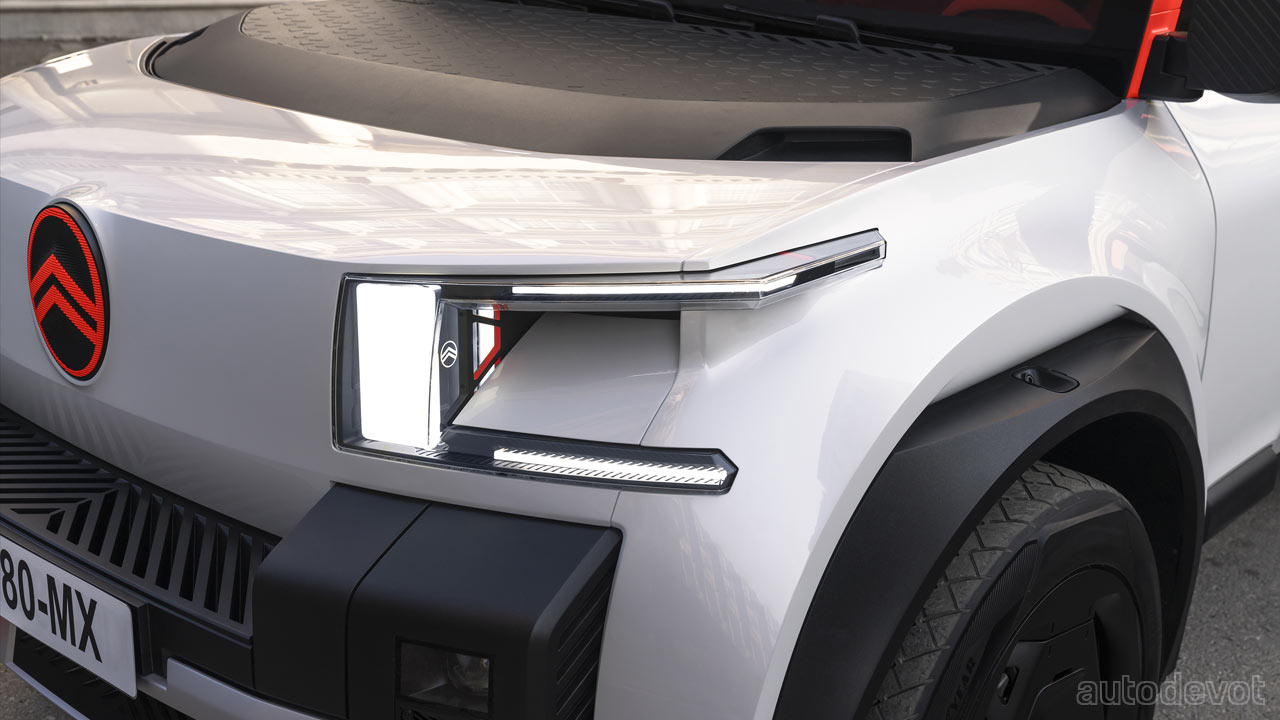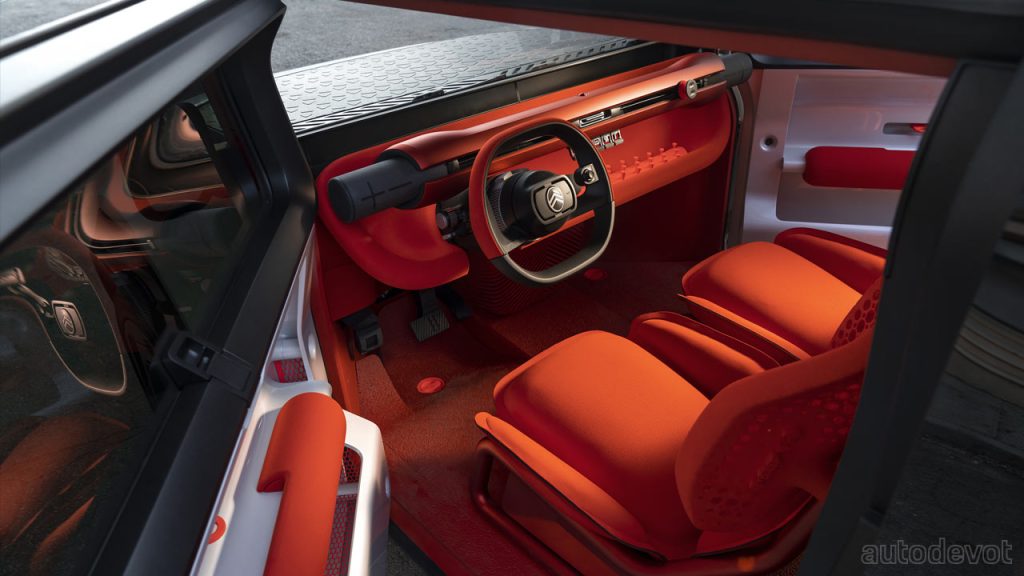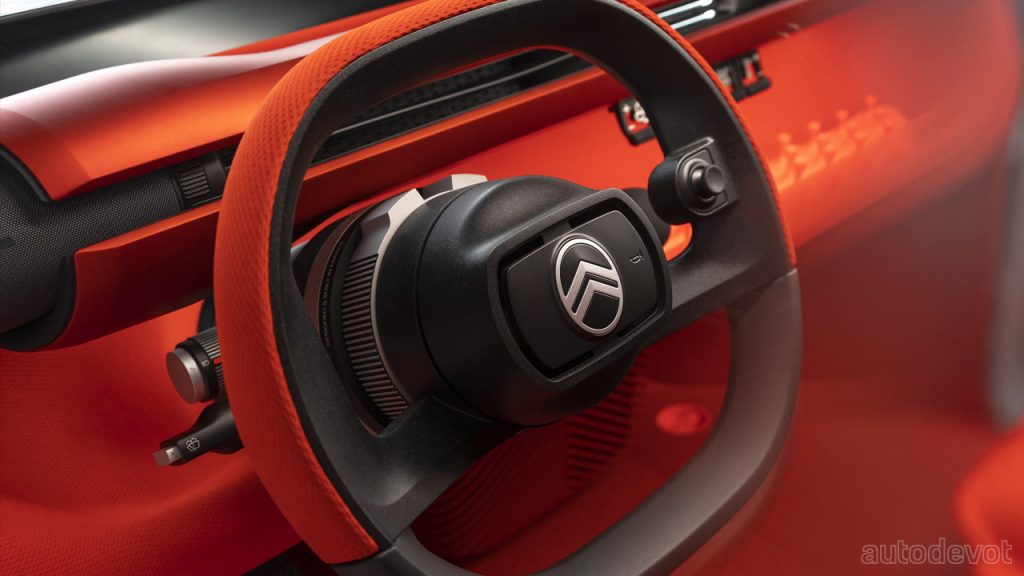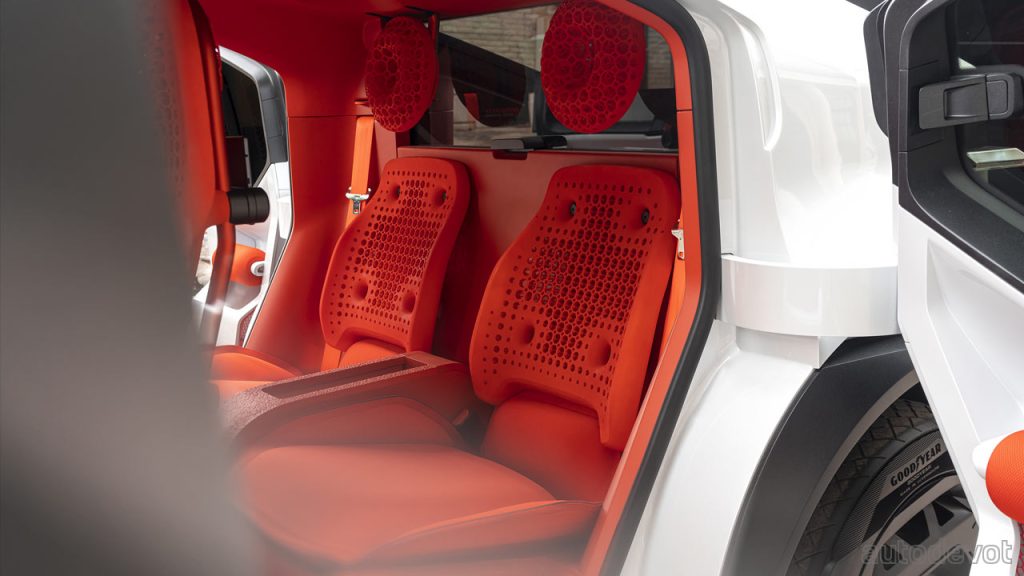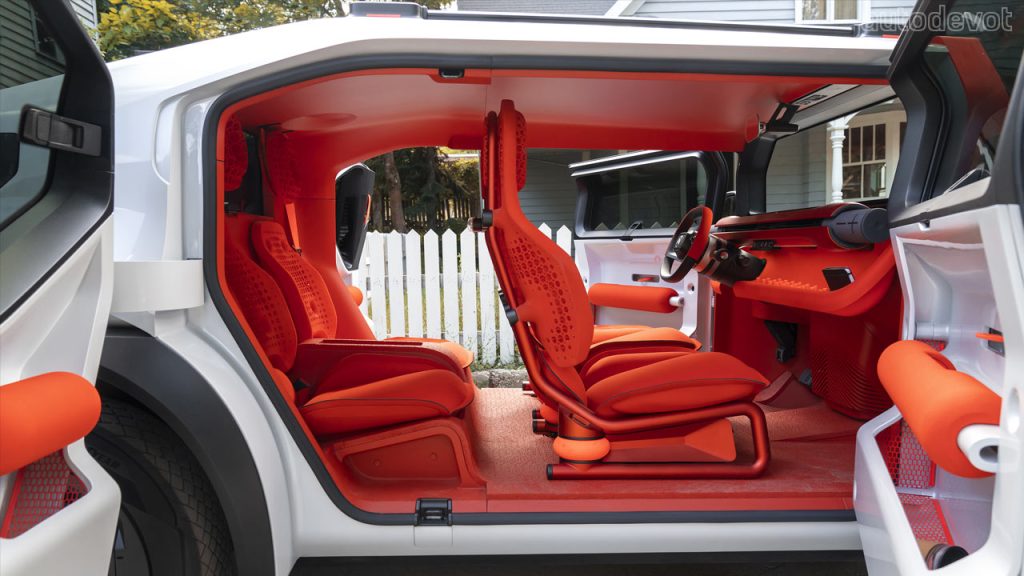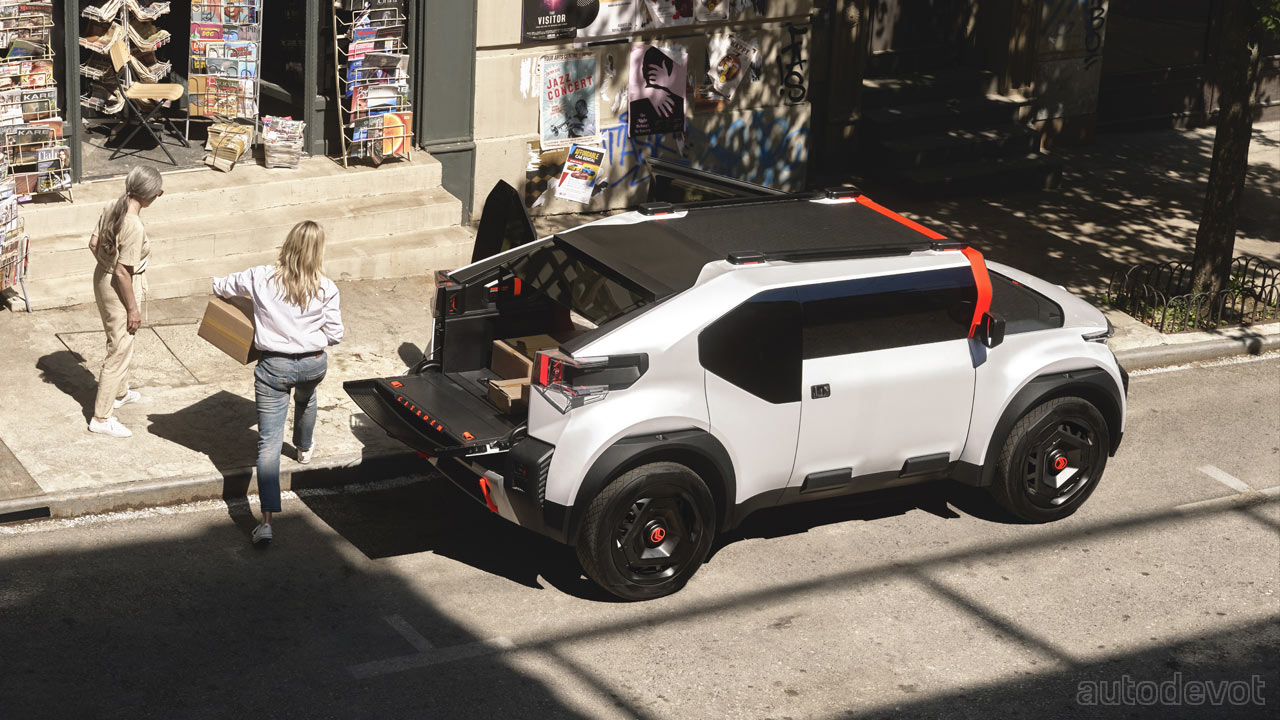Citroën has revealed the oli (pronounced all-ë) concept that aims to do things a li’l different compared with the traditional electric vehicles that are coming today. In simple terms, the oli is about simplicity and sustainability; it doesn’t care about luxury or being a 2,500 kg “palace on wheels” filled with screens and gadgets. In fact, it doesn’t even care (too much) about aerodynamics, but will talk about that in just a minute or two.
The name ‘oli’ rhymes with Ami—another simple and quirky EV. So, what kinda contraption is oli? Is it a car or a pickup truck? Apparently, it is the latter, because notice that bed at the back. As for the aerodynamics, Pierre Sabas, Head of Design, suggests that since the vehicle’s top speed is limited to 110 km/h (68 mph), the vertical windscreen shouldn’t be a problem. Just make sure that you take a different vehicle when you plan for shoplifting. The reason the windscreen is vertical is that it’s the shortest distance between top and bottom and uses the smallest amount of glass. Plus, the idea is also that a small screen less exposes the occupants to the sunlight and therefore reduces the air conditioning demand.
That said, to aid efficiency, the oli features an experimental “Aero Duct” system on the bonnet in an attempt to create a curtain of smooth airflow over the roof. As for sustainability, the bumpers contain 50% recycled materials, while the wheel arches are capped with a strong recycled plastic protector with a horizontal top. Even oli’s white BASF R-M Agilis waterborne paint is eco-effective with the lowest level of volatile organic compounds (below 250 g/l). The 20-inch wheels are wrapped with new prototype tyres co-created with Goodyear. The tyre tread compound is made of sustainable or recycled materials, including sunflower oils and rice husk ash silica, as well as pine tree resins and full natural rubber which replace synthetic, petroleum-based materials.
Notice that the door panels are, well, pretty much naked. Removing speakers, soundproofing material and electrical wiring save ~7 kg (15.4 lbs) per door, says Citroen. Instead of a full dashboard with multiple screens and hidden computers, the oli features a single symmetrical beam running across the width of the vehicle from which hangs the steering column and wheel on one side, a smartphone dock, and five clearly labelled toggle switches for the air conditioning system in the centre. Citroen proudly shares that the oli uses just 34 parts in this space while a comparable compact family hatchback uses around 75 parts in its dashboard and centre console.
The beam houses an electrified rail into which accessories can be plugged via USB sockets that slide along it. Apparently, you can even plug in your coffee maker while waiting for the kids to come out of school. Thanks to two direct air vents, one each in front of the driver and passenger, a smaller air conditioning unit can be used to further aid efficiency and reduce weight. And of course, the seat backrests are 3D-printed; the seat cushions are covered in textile made from 100% recycled polyester which is also apparently 100% recyclable. What about the audio system? Well, cylindrical Bluetooth speakers can be docked on the aforementioned dashboard beam.
As for the solutions for operating the HMI, the team came up with an unusual idea of using a joystick from a professional modular gamepad, mounted on oli’s steering wheel. The steering column incorporates a rotating shift lever coupled with the vehicle’s start-stop button, while smaller stalks operate the vehicle’s lights and indicators. We can go on and on about the oli, but you get the idea, right?
The oli’s target weight is around 1,000 kg (2,205 lbs), making it significantly lighter than most comparable compact SUVs. As a result, its all-electric powertrain needs only a 40 kWh battery pack to deliver a target range of up to 400 km (248.5 mi), Citroen says. By limiting the top speed to 110 km/h to maximise efficiency, energy consumption is estimated to be 10 kWh/100 km.

Leave a Reply
Note: Comments that are unrelated to the post above get automatically filtered into the trash bin.
